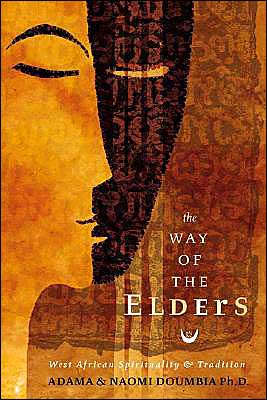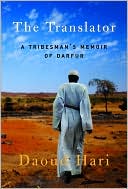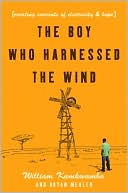Way of the Elders: West African Spirituality & Tradition
Contemporary West African culture harbors rich and meaningful spiritual traditions. Yet, there are few written records of West Africa's major beliefs, rituals, and ceremonies. The Way of the Elders co-authored by a West African native raised in the Mande tradition offers rare and authentic insight into the spirituality of West Africa, and particularly the Mande culture.\ This spiritual guidebook explains fundamental beliefs, such as reverence for the One Spirit, that permeate tribal life....
Search in google:
Contemporary West African culture harbors rich and meaningful spiritual traditions. Yet, there are few written records of West Africa's major beliefs, rituals, and ceremonies. The Way of the Elders co-authored by a West African native raised in the Mande tradition offers rare and authentic insight into the spirituality of West Africa, and particularly the Mande culture. This spiritual guidebook explains fundamental beliefs, such as reverence for the One Spirit, that permeate tribal life. Offerings, charms, herbal healing, shamans and their functions, the importance of wildlife, and the four elements of nature are discussed in detail. The second half of the book is devoted to sacred living and focuses on village life, sacred music and dance, pregnancy, birth, childhood initiation, marriage, death, and funerals. Library Journal We know too little about the religious traditions and practices of West Africa, the point of origin for so many African Americans today; this volume seeks to repair that lack. Adama Doumbia, who was born in Senegal, and Naomi Doumbia have written a brief but pleasantly illuminating volume on West African religious practices, especially those of the Mande culture. The authors are wise not to suggest that their study is an anthropologically perfect vision of Mande practice; instead, they discuss traditions and retell stories that might lead today's readers to refreshed self-knowledge and "to live unobtrusively and wholesomely off the land." Highly recommended. Copyright 2005 Reed Business Information.
1\ Spirits &\ Energy\ Everywhere there is sky, there is Spirit.\ Spirit has many names, but there is only one Spirit. Spirit is both near and far, as immanent as the earth and as transcendent as the sky. We recognize the strength and power of the Almighty through a thunderous storm; we feel the reliability and comfort of the Eternal with the rising sun; we observe the grace and beauty of the Creator in a dancing stream. In all of our surroundings, we experience the essence of the Divine. We celebrate Spirit's many qualities apparent or hidden in every form. Each plant, rock, animal, and person tells the story of creation and serves to nurture, teach, and guide us on our life journeys. Our belief that we are all a part of one Spirit affects our relations with one another; the action of one member of the community is felt by every one of us. The ultimate receiver of all prayers, Spirit is always a part of our greetings and blessings. We maintain deep reverence and awe for Spirit.\ Spirits\ Every spirit belongs to Spirit. We pray to these sacred mediators who share in the Supreme power.1 Our spiritual well-being is dependent upon our relationship to them; every one of us has the power to commune with these forces through prayer and sacrifice. Before we swim or fish, we make peace with the spirits of the water. Before we hunt or gather wood, we make peace with the spirits of the bush. Before we farm, we make peace with the spirits of the earth. They tell us what kind of sacrifice they desire; each divinity has its own special song, rhythm, color, and sacrificial animal. Sometimes they trouble us when we do not show proper respect to the earth or to one another. If there is too much rain or drought, or any disruption in our environment, we do not attribute it to Spirit but to the divinities to whom we may have not shown proper reverence. Spirits teach us how to bring order, peace, and harmony to our communities.\ Some of our spirits lived as human beings; others are forces of nature. They respond to our petitions, though they also operate from their own agendas. If we are unaware of any spirits, they are better able to exercise their own will and roam about freely. The focus of our lives is how effectively to interact with the world of Spirit. They are always communicating their wishes, demands, and prescriptions to us directly, or through our diviners and healers. Divinities draw their power and wisdom from Spirit, and we draw ours from them.\ Spirit's Energy\ Nyama is the energy that emanates from Spirit and flows throughout the universe.2 It is the life force that links all of existence together; humans, animals, plants, and minerals. The power of creation and destruction, nyama commands everything from bountiful harvests to droughts and plagues; it directs the twinkling stars and the rippling tides. This energy of the universe shapes nature into its many forms and yields to our handling of its power.\ We draw life from this potent force that connects all of creation. It is the fuel for all of our activities. Nyama is the source of energy for every word, thought, and action. To live harmoniously with nature, we live with a sensitivity to the power of nyama. To recognize this energy is to appreciate that everything is interconnected, integral parts of a whole.\ Those of us with high levels of nyama, such as shamans, diviners, blacksmiths, bards, and hunters, can maneuver this energy and direct it at will.3 The ability to channel nyama requires access to advanced levels of mystical knowledge. Those who possess this knowledge hold great influence in our communities. One may devote limitless time and effort to learn how to direct this energy, but most of us leave it to our artisans who inherit large concentrations of nyama from their ancestors. Many of our artisans marry within their own group to maintain their high levels of this energy. One must also learn to handle nyama through intensive training, as it can be deadly if one does not follow the appropriate rituals for engaging it. Our artisans spend their entire lives cultivating their relationship with this power.\ Our use of divination, charm making, and herbal healing draws upon our knowledge of this life force. Many of our artisans practice these forms of healing, enhancing and transforming our natural and social environments. Our blacksmiths work with the high levels of this energy present in the iron they shape and the woods they carve for our charms and ritual tools. As words carry power and are full of nyama, our bards possess great skill in directing these high levels of energy through their healing music and storytelling. Our hunters and leather workers handle massive amounts of nyama from the animals they hunt and the skins they treat, which we rely upon for our medicines and protective pieces.\ Our awareness of this awesome energy influences our efforts to live in balance and peace with all of Spirit's manifestations. Compassion, love, and selfless acts bring an abundance of this creative energy into our paths and serve to neutralize and keep at bay harmful nyama. Disruptive thoughts and actions can invite disharmony and destruction from this mysterious power. We remain in wonder of this energy of Spirit.\ Spirit Visitation\ Spirits seldom possess us; they make visits upon us. Spirit visitation is our opportunity to commune with the divinities. We encourage spirit visitation as the whole community prospers when a spirit descends upon one of us. They provide healing and impart knowledge for those of us present. A spirit possesses an individual when it enters one among us uninvited and does not surrender. Spirit possessions may require the intervention of spirit mediums to release the possessing force and divine the reason for the possession. They often occur among those who try to harm others or who neglect to make peace with a particular spirit. Sometimes a divinity may make a surprise visit upon one of us to heal or relay an important message, but most of the time the spirits wait for our invitations.\ We may construct a special altar for a spirit, in the form of a shrine, if it begins to visit regularly and offer guidance and support. We keep the shrine in a ceremonial room or in our home and offer regular libations and prayers to keep it content and comfortable.\ Preparations\ Before spirit visitation, those among us ready to receive a spirit must enter a fully open and meditative state, surrendering all expectations, needs, and desires. We clean ourselves, bathing with protective herbs to keep at bay unwanted forces. Frankincense is a common herb we burn at these ceremonies to ward off disruptive spirits. We also make a brew of protective herbs that no one at the ceremony may know, except the diviner who prepares them. We might wear special clothes to show our readiness to receive the spirit. We sometimes mark sacred symbols on our bodies with white chalk or clay, and wear powerful charms to strengthen us when the divinity visits. We may put white powder on our face and body to foster purity and well-being. We also prepare the ceremonial area with perfumes and water. The divinities enjoy the sweet smells and feel welcomed by our gifts. We may carry special herbs in a pot of water or place the shrines themselves on top of our heads to help bring on the visitation.\ Ceremony\ Performing rituals and making sacrifices encourage the spirit's power and benevolence. We pour libations of palm wine, millet beer, or water. Our prayers and incantations include blessings for the members of the group, and an invitation of a spirit to the ceremony to perform revelations, wondrous transformations, and healing. We sacrifice an animal such as a chicken or a goat. We may sprinkle the blood of the animal on the shrine, or we may cut out the liver of the animal and offer it up on the shrine. Usually, we consume the meat of the sacrifice and the beverage of the libations, creating a unity among all of us and the spirit.\ We continue our prayers and communicate with the spirit through our music and dance. Sometimes we play a specific drum rhythm, which will encourage a particular spirit's visitation. The drumming, chanting, and dancing may include everyone present at the ceremony. Our ceremonies can last several hours or several days.\ Spirit Communion\ Once the spirit descends, we speak and move in the manner of it, communicating its message to the community. When the spirit visits, we are not fully aware of what is happening; our voices may change, and our bodies may move and shake from the power of the divinity's presence. We may do things we would not ordinarily do as we become fully inhabited by the visiting spirit who has its own unique personality. We usually cannot make regular conversation or eye contact. We lose our vision of this world, and develop an inner vision. Some of us begin to speak a different language. Someone present will interpret the message from the spirit. When the divinity serves its purpose and departs, the visited among us often experience complete serenity and joy.\ Ancestors\ Our ancestors are the closest to us of all the intermediary spirits; they are our guardian spirits. Our ancestors maintain their role in our families and lives, more significantly than when they were physically present. They are always available to us, offering their guidance and protection.\ With other divinities, we must first learn their particular language and preferred sacrifice to communicate with them. With our ancestors, we already speak their language; we know their preferences and wishes. At times, when we are neglectful or unaware, they send us signals to capture our attention. They teach us to know Spirit everywhere hidden behind the appearance of things.\ We pray for our ancestors and we perform sacrifice to honor their lives. We appreciate them for the life they gave us and the ways they continue to instruct and nurture us. They provide us with our names, our trades, and our knowledge. Every family receives its own set of rules and teachings from its ancestors.\ Before each meal, we may place a piece of food on the ground as we call out the name of an ancestor. Friday is a special day when they like to eat with us. We may set aside a portion of food for them on this day, or we leave food out Thursday evening if they come overnight. Whenever we drink, we spill a little on the ground for them. We always serve a drink to the ancestors before posing a question or making a request of them.\ We may offer them their favorite foods, such as porridge, and pour it onto the earth and pray. They especially prefer when we offer balls of millet cakes. Libations of alcohol, such as millet beer, are another ancestral favorite. We give kola nuts, biscuits, and sugar away for offerings. We sacrifice a red or white chicken, and let the blood run into the soil and pray. As our ancestors have become one with the light, they especially like hats and shoes, which protect them from the brightness that surrounds them. We give away these items to people as offerings for our ancestors.\ We set up stones as altars for our ancestors and place them near our homes, in our yards, and in the center of the village. Sometimes we pray and make sacrifice where our ancestors lived or where they prayed. Often before we pray, we will chew pieces of kola nut, which we spit out onto their altar. The juice of the kola nut tempers our speech and ensures its purity and integrity.\ There is no formula to our prayer; we pray from our hearts. We talk with our ancestors as we do with those among us who are physically present. We ask them to work on our behalf in the world of Spirit. The most important way we honor our ancestors is how we live; they are always watching us. Sometimes our ancestors come to live among us, to help us through our children. The ways our children look or act reveal to us who they may be.\ Animal Spirits\ Animal spirit comes to us as a protective divinity, preserving the village from poverty, hunger, and illness.4 This spirit also shields our community from harmful nyama and disruptive mystical practices. Animal spirits may come in the form of any animal, like a goat, donkey, lizard, snake, or horse. They sometimes come in the form of a tree, though they are usually able to transform themselves into some kind of an animal.\ These creatures generally do not like the light and dwell in caves, forests, or mountains, though they remain near to the village. In every village, one will make itself known and we will often give it a special name. Usually we honor one specific creature, but sometimes we may honor all animals of its kind. Many times it will possess special powers. In one village, a snake might change into many different colors and have no end to its length.\ Once an animal spirit makes itself known to the community, one must never harm or kill it, or members of its kind, as this can bring about destructive consequences.5 Entire villages have been known to burn down through the unintentional harming of the animal spirit, if a sacrifice was not immediately performed to appease it. Sometimes a family will have a special animal spirit that tells a story of the family's ancestors. The family will never eat or harm any incarnation of its divinity.\ We make a yearly sacrifice to our animal spirit, and we may also make visits to its dwelling place to thank it for a bountiful harvest. Our elders know where to make the sacrifice and what kind to make. In some villages only the elders are present during the ceremony, and in other villages everyone participates. Each house may provide a sacrifice to an elder who will make the offering to the animal spirit. Sometimes everyone in the village will cook and eat the sacrifice together.\ Each animal has its own sacrifice that it likes. Elders may offer a live chicken or goat that they house in the abode of the animal spirit for it to consume. They offer prayers for the continuance of peace and abundance within the community. A ceremony may last up to three days.\ Sometimes a woman who is experiencing difficulties conceiving a child may visit the spirit's site to offer porridge, kola nuts, or chicken blood to the animal. A person may make a sacrifice of an animal to secure a husband or wife. We teach our children at a young age what the animal looks like so they will not harm it. Animal spirits teach us to have respect for nature and all her creatures.\ Story of the Animal Spirit\ Many of our family names come from our relationship to a particular animal spirit. A protective animal spirit of the Diara family is the lion (diara means “lion”). Snakes protect the Cissé, Niaré, Dramé, and Doukouré families, and crocodiles watch over the Traoré and Mariko lineages. The elephant oversees the Samaké family (sama means “elephant”). Doumbia's animal spirit is the tiger, and members of this family are not to wear tiger-print clothing, nor harm this animal.\ Couloubaly is a common Mande name with a rich story behind its origination.6 Couloubaly, or kulun-bali, means “no boat is there.” This name comes from a special time, long ago, when a king and his younger brother ruled a quiet little community on the edge of the river. The people lived peacefully until, one day, a nearby kingdom threatened to overtake them. The neighboring army moved in quickly and overpowered the village inhabitants, but the two king brothers were able to escape to the back of the village at the river. When they reached the edge of the water, the two men had no boat to cross and the army was quickly closing in to capture them. The brothers were trapped, when suddenly a huge catfish came to the edge of the river, just in time. The two kings jumped on the fish and were escorted across the river to safety. From this day forward, the Couloubaly brothers promised this animal spirit that no one from their clan would ever harm or consume any catfish.\ Bush Spirits\ Spirits of the bush are mostly benevolent; few are harmful. One must always show proper reverence to these powerful forces who can transform themselves into anything they wish to serve their purposes.7 Bush spirits only fear the lion, which is able to consume them. Bush spirits are blind to these domineering creatures, so they like to befriend those of us who frequent their domain. They give us knowledge about the wilderness, and in exchange, we show them where the lions roam. When family members do not return home, after they visit the bush, we know that these divinities have taken them. Those among us who return from a long stay in the forest often possess mystical and healing powers. Bush spirits are available to offer us their help, guidance, and wisdom in the domain of the wild. Often they are capricious, but this only serves to keep us alert and bring us greater awareness and discernment of our environment.\ We access these spirits through divination, visitation, or music. They especially enjoy bright colors and large gatherings of people. We sometimes recognize these spirits in the marketplace, as they often buy only vegetables and never bargain on the price. Bush spirits will not eat hot food, but they enjoy eating food that was cooked the day before. We believe that eating leftover food brings one a long life; it is full of nyama and has the blessings of being consumed by the ancestors and other spirits.\ Although very independent, bush spirits will serve those of us who invoke them with special formulas we inherit from our ancestors. Our ancestors made pacts with these divinities since the beginnings of time, consisting of prohibitions and obligations, which we and the spirits continue to honor.\ Story of the Bush Spirit\ There was a time, long ago, when we lived together with the bush spirits. We shared our food and what little money we had. As our community was quite large, with spirits and humans sharing everything, there was not enough food for everyone. We decided, one day, that we would farm to grow more food. We let the bush spirits decide what we were going to plant. Everything that grew above the ground, the bush spirits told us we could keep for ourselves; everything that was left underneath the earth they would take for themselves.\ The first year, we grew corn and that corn stretched high up into the sky. Since we were to have everything above the ground, we kept the corn, and the bush spirits took the roots from the earth. This agreement did not help the bush spirits much, as they were not as successful at selling their roots in the marketplace as we were at selling our corn.\ The second year, the bush spirits decided that we would grow peanuts. This time, they planned to take what grew above the ground, and we were to take what grew below it. At the end of the harvest, the bush spirits came and cut all of the peanut leaves and tried to sell them, unsuccessfully. We took all of our peanuts and, once again, prospered selling them in the marketplace. The bush spirits were troubled. Before the sun set, the cries of the bush spirits could be heard across the mountain tops. This was the last time the bush spirits lived together with us.\ Lessons of the Bush Spirit Story We teach our children the story of the bush spirit to help them understand our whimsical relationship with these divinities. We were close to the bush spirits like a family in the past, but we now have a relationship of competition and rivalry. As human beings, we have a special connection with the earth and we learned quickly how to receive her gifts and nourishment. We may have been more clever than the bush spirits for tilling the land and growing our crops, but the bush spirits own the wilderness where they have since made their home. When we are in their territory, we are subject to their ways and must show them proper respect.\ Crossroads' Spirits\ The crossroads' spirit is the spirit of change, transformation, and protection. We pay homage to this power at any crossroads we encounter by leaving behind some type of offering. In the village, we make regular offerings at the crossroads to honor the founding of the village. We also break eggs at an intersection when we experience challenges in our lives. One must not look back afterward, or the offering will not work. Breaking eggs, a symbol of fertility and potential growth, is a statement to the spirit that one is ready to invite positive change into one's life.\ We may also clean ourselves with water and herbs at the crossroads, to help us overcome difficult transitions. Women dance moribiassa at the crossroads to petition this divinity for the healing of a loved one who is ill or experiencing mental challenges. They will wear men's clothes as they dance this rhythm, and then leave the clothes behind as an offering.\ We also cover an animal tail with cowries and herbal medicine and dip it into water to sprinkle on us for healing at the crossroads. When we have accidentally killed an animal, we may appease the animal's nyama by soaking the animal in water and bathing with this water at the junction. This act of humility shows the animal's spirit our remorse, and enables the spirit to cross over peacefully. The crossroads' spirit teaches us the importance of accepting change and generating change that is peaceful and harmonious.\ Dwarf Spirits\ The month of August is the time of the dwarf spirits. The dwarf spirits may come at anytime, but they especially like to visit after the big rain when there is an abundance of vegetables and food. They like the full moon as well and usually roam about during this magical time. Dwarf spirits are wise, though mischievous, spirits of the bush, who usually dwell near anthills, baobab, or banana trees which provide them with their favorite foods.8 They enjoy eating couscous, so we often sprinkle hot sauce on top of this dish so they will not eat this food that we leave out for our ancestors. Peanuts are also a favorite snack.\ These feisty creatures particularly like to surprise us, trick us, and steal food from our homes. We know them by their small height and backwards feet. They may also wear red beards and grow long fingernails. Dwarf spirits are mostly harmless spirits, but they will fight for their food, which they collect in the calabash they carry. We say that the one who obtains the calabash of a dwarf spirit will never be poor. Like the magic lamp of a genie, the spirit of this magical calabash will grant any wish to its possessor. It is also an almost impossible task to retrieve this auspicious calabash from a dwarf spirit.\ These little creatures often run from homes with dogs, which can give them away. We dress our children with large hats if they need to go out at night to protect them from the dwarf spirits; the hats make them look taller and keep the dwarf spirits from coming to play with them. Dwarf spirits are also known to mimic the voice of the herders to steal cattle; they especially enjoy drinking cow's milk. Herders often have a special ability to see these little creatures who also like to run off with our horses and donkeys to tend to their business.\ Dwarf spirits possess great knowledge about plants and medicine, too, and will share this special information with a few of us. They teach us valuable things about the bush and represent a playful quality of Spirit. Dwarf spirits keep us on our toes, vigilant and unassuming.\ Human Spirits\ One of our goals as human beings is to gracefully harmonize matter and spirit. We contain within each of us an element of all existing things, connecting us to every creature and making us interdependent with creation. Our diverse qualities make us the center of attraction for many kinds of forces. Our ancestors and elders, through ritual, prayer, sacrifice, and initiation teach us how to balance the power and energy within us. When one among us is not balanced, this attracts harmful spirits into our path and disrupts the harmony of the entire community.\ Some of us have disturbed spirits that can cause great harm to others. We believe these unruly spirits leave their bodies in the night to break down and consume the life of others. The departed bodies of these intrusive forces cannot be awakened when they leave on their mission. They have the appetite to make others ill and disappear. This hereditary power resides in the gut of a person and grows stronger with age. These people have the ability to change their appearances and travel great distances. We say they have eyes in the backs of their heads as they can see everything around them. They ravish the hearts of people and pass the spoils on to others. Those of us who can see them, see them walking on their heads. We describe them as creatures who possess qualities that are upside down or backward. They represent those forces that serve to undermine the structure and unity we strive for within our communities.\ These spirits reside mostly in women, but sometimes they dwell in men too.9 It is the women among us who have the power to protect us from them, as they are best at seeing these people with troubled spirits. They provide herbs to keep them away or make them lose their power by convincing them to confess to their actions. Those of us who feel attacked by such spirits burn cotton seeds, frankincense, and kunjé (Guiera senegalensis) together and inhale the fumes. This concoction of herbs provides a protective shield around us and keeps these spirits at bay.
Contents Introductionxi I Cosmos & Nature 1Spirits & Energy3 2Offerings & Sacrifice19 3Shamans: Diviners & Healers25 4Charms: Amulets & Talismans39 5Herbs & Healing Recipes53 6Wildlife & Elements61 7Dreams, Signs & Symbols 75 II Sacred Living 8Village Life85 9Music, Dance & Ceremony 95 10Family107 11Pregnancy & Birth113 12Childhood Initiation 131 13Marriage139 14Death & Funerals149 15West African Spirituality155 Glossary of Terms159 Notes171 Bibliography179 Index183
\ Library JournalWe know too little about the religious traditions and practices of West Africa, the point of origin for so many African Americans today; this volume seeks to repair that lack. Adama Doumbia, who was born in Senegal, and Naomi Doumbia have written a brief but pleasantly illuminating volume on West African religious practices, especially those of the Mande culture. The authors are wise not to suggest that their study is an anthropologically perfect vision of Mande practice; instead, they discuss traditions and retell stories that might lead today's readers to refreshed self-knowledge and "to live unobtrusively and wholesomely off the land." Highly recommended. Copyright 2005 Reed Business Information.\ \








